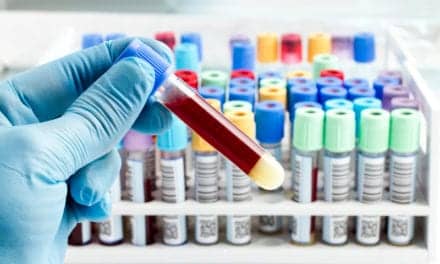Summary:
CND Life Sciences has released baseline results from its NIH-funded Syn-Sleep Study, showing that 75% of patients with idiopathic REM sleep behavior disorder (iRBD) had P-SYN deposits in their skin, supporting its role as an early biomarker for neurodegenerative diseases.
Takeaways:
Early Detection: The Syn-One Test detected P-SYN in 75% of iRBD patients without overt neurodegenerative disease, highlighting its promise for early, preclinical diagnosis.
- Disease Prediction: iRBD is strongly linked to future development of Parkinson’s, DLB, or MSA, with over 70% of patients converting within 12 years.
Clinical Utility: A minimally invasive skin biopsy could help identify patients at risk for synucleinopathies, guiding early interventions and future therapeutic strategies.
CND Life Sciences (CND), a medical technology company pioneering the development of cutaneous neurodiagnostic tests and associated biomarker services, today announced baseline results from the Syn-Sleep Study, a 24-month longitudinal study funded by the National Institutes of Health (NIH). The study is investigating deposition of phosphorylated alpha-synuclein (P-SYN) in skin biopsies of patients with both idiopathic REM sleep behavior disorder (iRBD) and no evidence of other neurodegenerative diseases. Results thus far have shown P-SYN detection in 75% of patients with iRBD at baseline.1
These results and more information will be presented at SLEEP 2025, the 39th annual meeting of the Associated Professional Sleep Societies, LLC, a joint venture of the American Academy of Sleep Medicine and the Sleep Research Society. This year’s event will be held in Seattle, Washington June 8-11 and CND will exhibit in Booth 1444.
iRBD Is a Serious Sleep Disorder
iRBD is a sleep disorder that causes affected individuals to act out their dreams, often with violent movements and vocalizations. Individuals with iRBD may kick, punch, jump out of bed, and yell in their sleep. It is considered “idiopathic” when there is no clear cause for the condition’s symptoms. iRBD is a well-established early indicator of future neurodegenerative conditions involving P-SYN.2 P-SYN is a pathological protein associated with neurodegenerative conditions known as synucleinopathies, such as Parkinson’s disease (PD), dementia with Lewy bodies (DLB), and multiple system atrophy (MSA). One key scientific paper showed that 73.5% of patients diagnosed with iRBD (n=1,280) converted to PD, DLB, or MSA within 12 years.3
The Syn-One Test measures the presence of intra-neuronal P-SYN through a simple in-office skin punch biopsy procedure and has previously demonstrated 95% positivity rate in patients with clinically definite synucleinopathies including PD, DLB, and MSA.4
Syn-One Test IDs P-SYN in Skin Biopsies
By using the Syn-One Test, the goals of the Syn-Sleep Study are to assess 1) the presence of P-SYN in skin biopsies in iRBD patients with no evidence of a neurodegenerative disease, and 2) if the pattern of P-SYN deposition is a predictor of future phenoconversion to a clinically definite synucleinopathy.1
“These results support evidence that iRBD is a prodromal neurodegenerative condition and suggests that a minimally invasive skin biopsy can be used to assess P-SYN status in these patients,” says Michele Tagliati, MD, a movement specialist in the Department of Neurology at Cedars-Sinai in Los Angeles, California and one of the study’s investigators. “As the field advances and there are lifestyle interventions and future drug therapies that could address diseases like PD and DLB before they fully develop, determining if an RBD patient has synuclein deposition will be increasingly important.”
Summary results:
- A total of 80 patients with iRBD without evidence of other neurodegenerative disease enrolled in the Syn-Sleep Study
- Enrolled subjects had symptoms of iRBD for an average of 6.7 years
- Patients with abnormal test results tended to be older and had the disease for longer periods
- Those individuals with P-SYN found in skin biopsy tended to have a greater degree of hyposmia
- P-SYN positivity rates did not differ based on the severity of iRBD symptoms, autonomic symptoms, or how iRBD was diagnosed (polysomnography or iRBD questionnaire)1
“We are currently doing a longitudinal reassessment of these subjects to determine if quantification of P-SYN can serve as a biomarker of disease progression,” says Todd Levine, MD, chief medical officer of CND Life Sciences, CME, clinical professor at Arizona State University, and the principal investigator of the study. “The ability to detect those patients at risk opens the door for earlier disease modulation and prevention trials.”
Featured Image: Olan Dah | Dreamstime.com
References
- Levine T, Gibbons CH, Bellaire B, et al. The Syn-Sleep Study: Detection of Cutaneous Phosphorylated Alpha-Synuclein in REM Sleep Behavior Disorder. Abstract.
- Iranzo A, Santamaria J, Tolosa E. Idiopathic rapid eye movement sleep behaviour disorder: diagnosis, management, and the need for neuroprotective interventions. Lancet Neurol. 2016 Apr;15(4):405-19. doi: 10.1016/S1474-4422(16)00057-0.
- Postuma RB, Iranzo A, Hu M, et al. Risk and predictors of dementia and parkinsonism in idiopathic REM sleep behaviour disorder: a multicentre study. Brain. 2019;142(3):744-759. doi:10.1093/brain/awz030.
- Gibbons CH, Levine T, Adler C, et al. Skin biopsy detection of phosphorylated α-Synuclein in patients with synucleinopathies. JAMA. 2024;331(15):1298–1306. doi:10.1001/jama.2024.0792.





